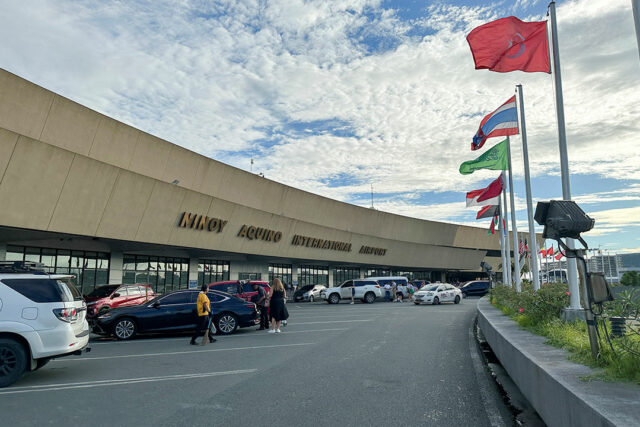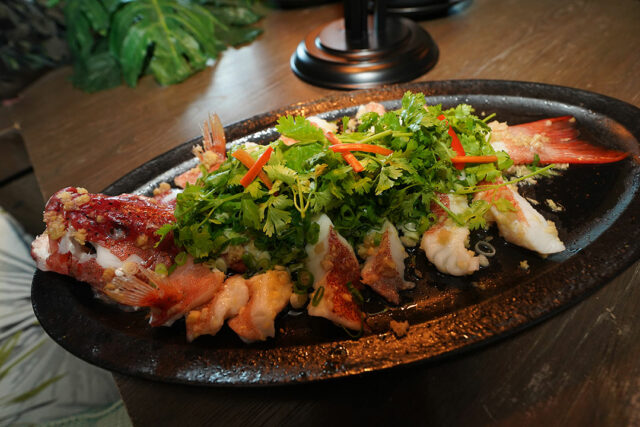BSP may cut by 100 bps more this year
THE BANGKO SENTRAL ng Pilipinas (BSP) may cut by a total of 100 basis points (bps) in the last three months of 2024, Fitch Solutions’ unit BMI said, amid a downtrend in inflation and the start of the US Federal Reserve’s own easing cycle.
“We expect the BSP to ease more aggressively over the coming months,” BMI said in a report.
“Crucially, we now forecast the Fed to cut by a total of 125 bps in 2024. On this projection, we think that the BSP will have more policy room to maneuver with a 100-bp cut of its own.”
If the BSP cuts by a cumulative 100 bps this year, this would bring the key rate to 5.5% by yearend.
BSP Governor Eli M. Remolona, Jr. earlier this week said that the central bank has room to deliver a 50-bp rate cut in one meeting, but this would only be in a “hard-landing” scenario.
The Monetary Board in August reduced the benchmark rate by 25 bps to 6.25% from 6.5%.
BMI previously projected two 25-bp rate cuts for the year but revised this outlook after the US Federal Reserve delivered a jumbo 50-bp cut in September.
“Such a move essentially provides the BSP with leeway to ease more aggressively,” it said.
BMI now expects the Monetary Board to deliver a 50-bp cut on Oct. 16 and another 25-bp cut on Dec. 19.
“We have highlighted that the economy is in need of support following second-quarter gross domestic product (GDP) data,” BMI said.
The Philippine economy grew by 6.3% in the second quarter, driven by the 11.5% expansion in gross capital formation. On the other hand, private consumption rose by 4.6% from 5.5% a year ago.
“The boost received from a surge in investment activity will prove difficult to sustain against the backdrop of high interest rates. In the face of an economic slowdown, policy makers will likely seek to unwind restrictive policy settings to bolster growth at the earliest possible time,” it added.
The government is targeting 6-7% growth this year. To meet the lower end of the target, the economy should expand by 6% in the second half.
“The BSP’s decision to lower interest rates ahead of the Fed is a sign that policy makers are starting to grow increasingly concerned about the economy’s health,” BMI said.
Easing inflation will help support further easing by the central bank, it said.
“For starters, inflation has become less of a concern. At 3.3% in August, the headline figure is now comfortably within the central bank’s target range of 2-4%.”
September inflation likely slowed to 2.5%, according to the median estimate in a BusinessWorld poll of 15 analysts conducted last week. If realized, this would also be the slowest inflation print in nearly four years or since the 2.3% clip in October 2020.
The recent tariff cut on rice imports is likely to lower inflation by 1.2 percentage points (ppts), which may bring inflation to 2.8% by end-2024,” BMI said.
“What is more reassuring is that we think the Fed is set for another 50-bp cut in December, providing the BSP with more policy room to maneuver without external stability constraints. If we are right, nominal interest rate differentials between the two countries will be maintained at current levels of around 125 bps,” BMI said.
For next year, BMI said that the BSP will be able to continue on its easing cycle, likely cutting rates by a total of 100 bps.
“We expect the terminal rate to settle around 4.5%. This would represent 200 bps worth of cuts from the peak to the trough, bringing interest rates back to pre-pandemic levels,” it said.
It noted that this outlook is driven by anticipations of the Fed’s easing cycle to be in “full swing” by next year and expectations of inflation settling within the BSP’s 2-4% target range, barring any external shocks.
“Moreover, our 6.2% growth projection for 2025 is still below trend. And policy makers will look to lower rates further to bolster growth in the absence of additional constraints.”
The government is targeting 6.5-7.5% growth next year.
On the other hand, BMI flagged risks to its monetary policy outlook.
“While we are confident that the BSP will continue to loosen policy, we are less sure of its magnitude. The October meeting could very well conclude with just a 25-bp cut if policy makers adopt a more cautious approach towards easing following cuts in the reserve requirement ratio.”
The recent cuts in banks’ reserve requirement ratios (RRR) would give the central bank “less flexibility” to ease policy rates, BMI said.
The BSP last month announced it would reduce the RRR of banks and nonbanks, effective on Oct. 25. It will slash the ratio for big banks and nonbank financial institutions with quasi-banking functions by 250 bps to 7% from 9.5%.
“On top of that, our BSP forecast hinges on the Fed’s interest rate trajectory. If the Fed chooses to cut by 25 bps in December instead of 50 bps, the BSP could stand pat in December,” BMI added. — Luisa Maria Jacinta C. Jocson

![BSP_3822-1024x683 [BW file photo]](https://www.bworldonline.com/wp-content/uploads/2024/04/BSP_3822-1024x683-BW-file-photo-640x427.jpeg)

 AMBASSADOR LEEHIONG T.
AMBASSADOR LEEHIONG T. 














